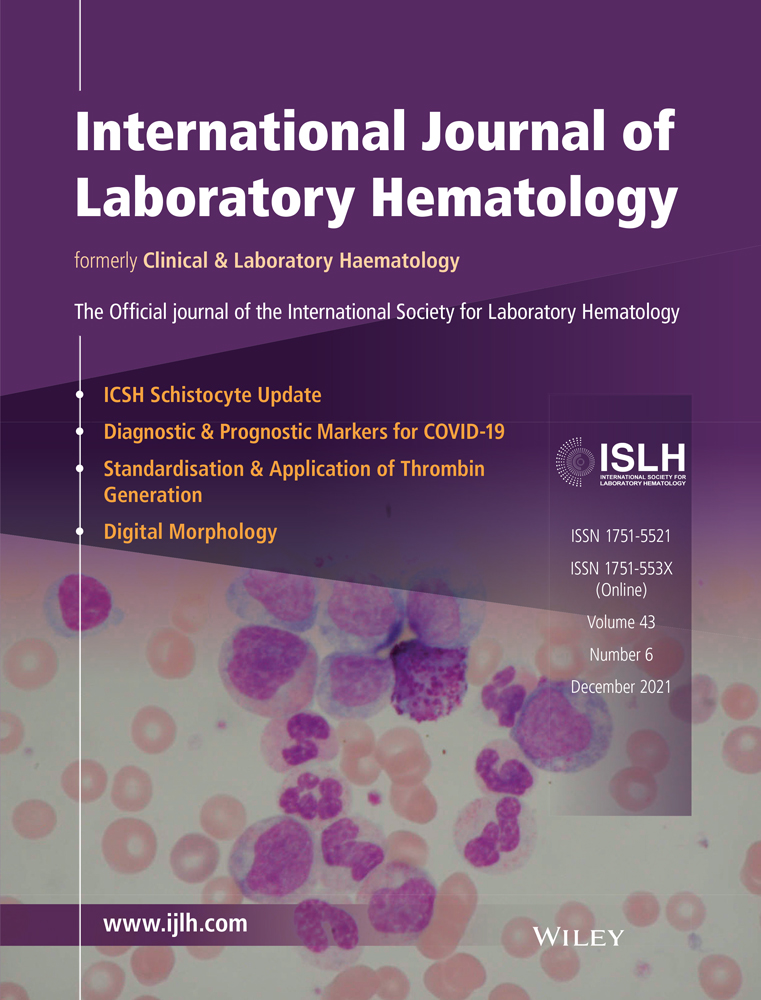An evaluation of the Japanese Society on Thrombosis and Hemostasis criteria for disseminated intravascular coagulation as a predictor of prognosis in patients with infection
Funding information
This work was supported by Asahi Kasei Pharma Corporation, which funded the analysis and English editing of the manuscript.
Abstract
Introduction
A criterion for disseminated intravascular coagulation (DIC) that reflects the status of controlled coagulopathy would be useful for determining when to stop treatment. Use of the DIC criteria of the Japanese Society on Thrombosis and Hemostasis (JSTH) for predicting the outcome during recombinant soluble thrombomodulin (thrombomodulin alfa, TM-α) treatment was evaluated.
Methods
A retrospective, multicenter survey was conducted in 798 medical facilities in Japan. Of the 4342 patients who underwent TM-α treatment, 193 with infection-associated DIC were investigated.
Results
The 28-day mortality rate increased with the increase in JSTH DIC scores at the end of TM-α treatment, with a Cramer's coefficient of association of 0.431. A reduced platelet count (odds ratio [OR]: 0.847, P < .001), prolonged prothrombin time ratio (OR: 5.681, P < .001), decreased fibrinogen level (OR: 0.995, P < .001), higher level of fibrinogen and fibrin degradation products (OR: 1.009, P = .026), and lower antithrombin activity (OR: 0.973, P < .001) were correlated with 28-day mortality. On multivariate analysis, the JSTH DIC score at the completion of TM-α therapy was a predictor of mortality (OR: 1.591, 95% CI: 1.219-2.077).
Conclusion
The JSTH DIC score at the end of anticoagulation therapy may be a reliable tool for predicting the outcome in patients with infection-associated DIC.
CONFLICT OF INTEREST
Madoiwa S, Uchiyama T, Takezako N, Suzuki K, Seki Y, and Okamoto K received personal fees from Asahi Kasei Pharma Corporation outside the present work. Wada H received grants and personal fees from Asahi Kasei Pharma Corporation and the Japan Blood Products Organization outside the present work. Kawasugi K and Ikezoe T received grants and personal fees from Asahi Kasei Pharma Corporation outside the present work. Honda G is an employee of Asahi Kasei Pharma Corporation. Kawano N received no grants or personal fees. Asahi Kasei Pharma Corporation covered the expenses for the analysis and the English editing of the manuscript.
Open Research
DATA AVAILABILITY STATEMENT
The data supporting the findings of this study are available from Asahi Kasei Pharma Corporation, but restrictions apply to the availability of these data, which were used under license for the current study, and so are not publicly available.




